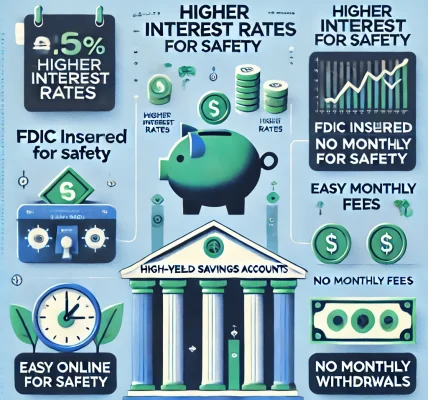Everyone dreams of visiting faraway places—whether it’s lounging on a beach in Bali, exploring the streets of Paris, or hiking through the Swiss Alps. However, making those travel dreams a reality requires proper planning, and that’s where saving plans come into play. Using the right saving plan, you can set aside money systematically and build a fund specifically dedicated to your travel goals.
In this blog, we’ll explore how saving plans can help you fund your travel aspirations and provide you with the tools to get started on your journey.
Why Saving Plans Are Perfect for Travel Goals
Saving plans are structured financial tools designed to help individuals accumulate wealth for specific goals. They allow you to systematically save money over time, earning interest while your funds grow. When it comes to funding your travel goals, saving plans provide several advantages:
- Discipline in Saving: A saving plan encourages regular contributions, preventing impulse spending and ensuring that you remain committed to your travel goal.
- Interest Earnings: Many saving plans offer interest, allowing your money to grow over time without you having to actively manage it.
- Goal-Oriented: You can set up saving plans tailored to the exact amount you need for your travels, helping you stay focused on your financial objective.
Now that we understand the benefits, let’s dive into the best saving plans that can help you fund your travel goals.
1. Recurring Deposit (RD)
A Recurring Deposit (RD) is one of the simplest and most reliable ways to save for your travel goals. With an RD, you commit to depositing a fixed amount of money each month into a bank account for a specified tenure, usually between 6 months and 10 years.
Why Choose an RD for Travel?
- Fixed Monthly Contributions: You’ll be required to make regular monthly deposits, making it easier to manage your budget.
- Guaranteed Returns: The interest rate is fixed, so you know exactly how much you’ll earn over time.
- Safety: RDs are low-risk and ideal for conservative investors who prefer capital protection.
How to Use an RD for Travel:
- Set a Goal: Calculate the total cost of your trip, including flights, accommodation, activities, and souvenirs.
- Set a Monthly Deposit Amount: Determine how much you can comfortably save each month and set up a recurring deposit that aligns with your goal.
2. Public Provident Fund (PPF)
The Public Provident Fund (PPF) is another popular long-term saving plan that offers attractive interest rates and tax benefits. Although PPF has a 15-year lock-in period, it can still be a good option for individuals planning a long-term trip or saving for future travel.
Why Choose PPF for Travel?
- Tax-Free Returns: The interest earned in a PPF account is tax-free, making it a great way to accumulate funds over time.
- High-Interest Rates: PPF offers competitive interest rates, which can result in significant growth over the long term.
- Loan Facility: After 3 years, you can take a loan against your PPF balance, offering flexibility if you need to fund your trip in the interim.
How to Use PPF for Travel:
- Long-Term Savings: Since PPF requires long-term commitments, it’s ideal for individuals saving for travel goals several years down the line.
- Strategic Withdrawals: Plan your withdrawals carefully to ensure that you’re maximizing your returns and accessing funds when you’re ready to travel.
3. Fixed Deposits (FDs)
A Fixed Deposit (FD) is a safe and secure investment option where you lock your money into a fixed-term account at a predetermined interest rate. FDs offer higher returns than regular savings accounts, and they are a great choice for short- to medium-term travel goals.
Why Choose an FD for Travel?
- Capital Protection: FDs are low-risk investments that protect your principal amount.
- Flexible Tenure: You can choose the tenure based on your travel plans—whether it’s a few months or several years.
- Fixed Returns: Enjoy fixed interest payouts that will help you grow your travel fund consistently.
How to Use an FD for Travel:
- Set a Time Frame: Choose an FD with a tenure that matches your travel timeline. For example, if you plan to travel in 2 years, choose a 2-year FD.
- Plan for Liquidity: FDs may charge a penalty if you withdraw before maturity. Consider whether you need liquidity or if you can wait until the maturity date.
4. Systematic Investment Plan (SIP)
A Systematic Investment Plan (SIP) is an investment strategy where you invest a fixed amount in mutual funds at regular intervals. Although SIPs are subject to market risks, they have the potential for higher returns than traditional saving plans. If you’re planning a long-term trip and are comfortable with some market risk, SIPs could be an excellent option.
Why Choose SIP for Travel?
- Market-Linked Returns: SIPs provide exposure to equity markets, which can generate higher returns than traditional saving plans.
- Flexibility: You can choose from different types of mutual funds based on your risk tolerance and financial goals.
- Rupee Cost Averaging: SIPs allow you to invest consistently over time, which can help mitigate the impact of market volatility.
How to Use SIP for Travel:
- Start Early: The earlier you start an SIP, the more time your investments have to grow.
- Choose the Right Funds: Pick equity or hybrid funds if you’re aiming for high returns over the long term.
- Monitor Regularly: Keep an eye on your SIP’s performance and make adjustments as necessary.
5. Tax-Saving Fixed Deposits
If you’re saving for travel and want to avail of tax benefits, Tax-Saving Fixed Deposits are a great option. These deposits have a 5-year lock-in period and are eligible for tax deductions under Section 80C.
Why Choose Tax-Saving FDs for Travel?
- Tax Benefits: Enjoy deductions under Section 80C, which can reduce your taxable income.
- Fixed Returns: Like regular FDs, tax-saving FDs provide fixed returns.
- Shorter Lock-In Period: With a 5-year lock-in period, tax-saving FDs strike a balance between short-term and long-term savings.
How to Use Tax-Saving FDs for Travel:
- Plan Your Travel Early: Use these FDs if you’re planning a trip in 5 years or more.
- Deposit Regularly: Consider making a lump-sum investment in a tax-saving FD to avail the tax benefits and start accumulating your travel fund.
Tips for Saving for Travel
- Start Early: The earlier you begin saving, the more time you have to accumulate funds for your trip.
- Set a Realistic Goal: Research the costs involved in your travel and set a realistic saving target.
- Track Your Progress: Regularly monitor your saving plan and adjust your contributions if needed.
- Consider Travel Insurance: Don’t forget to factor in the cost of travel insurance for extra peace of mind during your journey.
Conclusion
Funding your travel goals doesn’t have to be a daunting task. By choosing the right saving plan, you can gradually accumulate the necessary funds, ensuring that you’ll be ready to explore the world when the time comes. Whether you prefer the fixed returns of a recurring deposit or the flexibility of a systematic investment plan, there’s a saving plan that suits every traveler’s needs.




